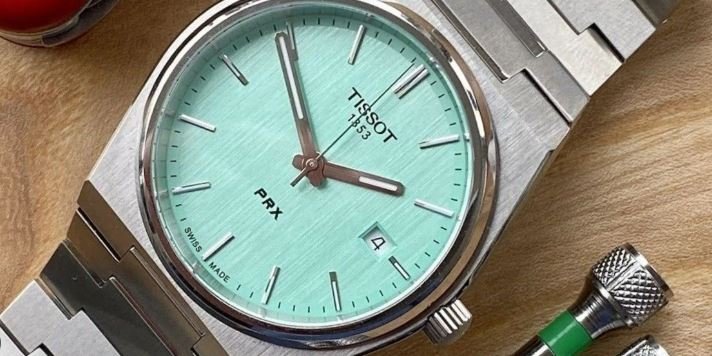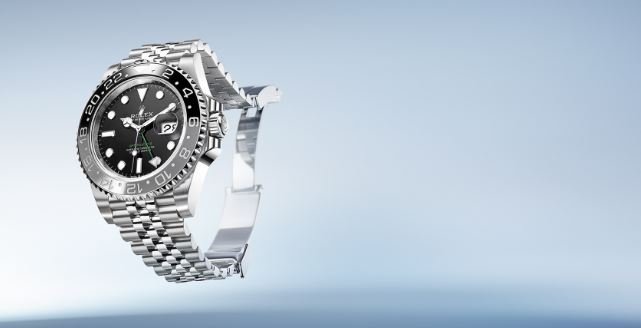The world of luxury watches continually evolves, embracing innovative materials to enhance durability, aesthetics, and functionality. Traditional materials like gold, stainless steel, and platinum still dominate, but watchmakers increasingly explore alternative materials to create unique and cutting-edge timepieces. Let’s explore into some of these alternative materials revolutionizing the luxury watch industry.

1. Ceramic
Ceramic has become a popular choice in luxury watchmaking due to its impressive durability and scratch-resistant properties. It offers a sleek, modern look and can be produced in various colors, allowing for greater design versatility. Brands like Rado and Omega have mastered the use of ceramic in their watches, offering pieces that are both robust and stylish.
2. Carbon Fiber
Carbon fiber is renowned for its strength and lightweight properties, making it an ideal material for high-performance luxury watches. Its unique texture and appearance give watches a contemporary and sporty edge. Hublot and Richard Mille are pioneers in using carbon fiber, creating watches that are not only durable but also visually striking.
3. Titanium
Titanium is celebrated for its exceptional strength-to-weight ratio, corrosion resistance, and hypoallergenic properties. It offers a sleek, industrial look and is significantly lighter than stainless steel, making it comfortable for everyday wear. Brands like Panerai and Breitling incorporate titanium in their designs, producing timepieces that are both robust and elegant.
4. Sapphire Crystal
While sapphire crystal is commonly used for watch faces due to its scratch resistance, some watchmakers have extended its use to the entire case. Sapphire crystal cases are transparent, providing a unique view of the watch’s inner workings. Bell & Ross and MB&F have crafted watches with sapphire crystal cases, showcasing the intricate movements inside.
5. Bronze
Bronze has gained popularity for its distinctive appearance and the patina it develops over time. This material gives watches a vintage, rugged look that evolves with the wearer. Tudor and Oris have successfully incorporated bronze in their collections, offering watches that tell a story through their changing appearance.
6. Forged Carbon
Forged carbon is a composite material that combines carbon fiber with resin, resulting in a lightweight and highly durable substance. Its distinctive marbled appearance makes each watch unique. Audemars Piguet and Ulysse Nardin have embraced forged carbon, creating timepieces that are both innovative and visually appealing.
7. Ceratanium
Ceratanium is a proprietary material developed by IWC Schaffhausen, combining the lightweight properties of titanium with the scratch resistance of ceramic. This material offers a sleek, matte black finish and exceptional durability. IWC’s use of Ceratanium in their pilot and dive watches highlights their commitment to innovation and quality.
8. Meteorite
Meteorite dials are crafted from actual pieces of meteorite, offering a unique and extraterrestrial element to luxury watches. The natural patterns found in meteorite make each dial one-of-a-kind. Rolex and Jaquet Droz have incorporated meteorite dials into their designs, creating watches that are truly out of this world.
9. Silicon
Silicon is increasingly used in watch movements for its anti-magnetic properties and precision. It enhances the accuracy and longevity of the movement components. Patek Philippe and Omega have integrated silicon in their movements, improving the performance and reliability of their timepieces.
10. Recycled Materials
Sustainability is becoming a significant focus in the luxury watch industry. Brands like Panerai and Breitling are using recycled materials, such as ocean plastics and reclaimed metals, to create environmentally friendly watches. This approach not only promotes sustainability but also offers unique and innovative designs.
Conclusion
The exploration of alternative materials in luxury watchmaking reflects the industry’s commitment to innovation and quality. These materials enhance the durability, functionality, and aesthetics of timepieces, offering watch enthusiasts a diverse range of options. Whether it’s the sleek look of ceramic, the unique patterns of meteorite, or the sustainability of recycled materials, the use of alternative materials ensures that luxury watches continue to evolve and captivate.











